
ALDRICHIMICA ACTA
Scope & Guideline
Transforming Ideas into Impactful Research
Introduction
Aims and Scopes
- Catalytic Chemistry:
The journal places a strong emphasis on catalytic reactions, particularly those involving transition metals such as rhodium and palladium, showcasing methodologies that enhance the efficiency and selectivity of chemical transformations. - Asymmetric Synthesis:
A core area of focus is asymmetric catalysis, with numerous papers discussing chiral catalysts and their applications in generating enantiomerically enriched products, reflecting the importance of chirality in pharmaceuticals and fine chemicals. - Organic Electrocatalysis:
The rise of electrocatalysis in organic synthesis is a prominent theme, with papers addressing the challenges and innovations in this field, indicating a commitment to exploring sustainable and energy-efficient methodologies. - Microbiome and Natural Products:
The journal also explores the intersection of chemistry and biology, particularly in the context of natural products and microbiomes, highlighting the significance of chemical processes in biological systems. - Fluorine Chemistry:
Another distinctive feature is the focus on fluorine chemistry, including the development of new reagents and reactions involving fluorinated compounds, which are critical for modern medicinal chemistry.
Trending and Emerging
- Visible-Light Mediated Reactions:
The increasing focus on visible-light-mediated reactions indicates a trend towards greener chemistry, utilizing light as an energy source to drive chemical transformations under mild conditions. - Single-Electron Oxidation Reactions:
Research on single-electron oxidation processes is emerging, showcasing innovative strategies for carbon-carbon bond formation and the development of new reaction pathways. - Advancements in Electrosynthesis:
There is a clear trend towards exploring electrosynthesis, with multiple papers discussing its potential for sustainable organic transformations, marking a shift towards more environmentally friendly methodologies. - Chiral and Enantioselective Catalysis:
The emphasis on chiral organocatalysts and enantioselective reactions reflects a growing interest in the development of new chiral catalysts that can improve the efficiency and selectivity of organic reactions. - Microbiome Chemistry:
The rise in publications discussing the chemistry of microbiomes and their natural products highlights an emerging interdisciplinary approach, connecting chemistry with microbiology and biochemistry.
Declining or Waning
- Traditional Organic Synthesis Methods:
There seems to be a decrease in the publication of papers centered around traditional organic synthesis methods without innovative modifications, as researchers increasingly seek novel approaches and catalytic strategies. - Basic Biochemical Assays:
Papers focusing solely on basic biochemical assays, such as standard microbiological methods, are less frequent. This may indicate a shift towards more complex studies that integrate chemistry with advanced biological research. - Non-Catalytic Approaches:
There is a noted decline in studies that do not involve catalysis in organic reactions, as the field moves towards more efficient and selective catalytic processes, reflecting the growing preference for catalytic methodologies.
Similar Journals

RUSSIAN JOURNAL OF GENERAL CHEMISTRY
Bridging Disciplines Through Rigorous Chemistry InsightsThe Russian Journal of General Chemistry is a prominent scholarly publication dedicated to advancing the field of general chemistry. Published by MAIK NAUKA/INTERPERIODICA/SPRINGER, this journal contributes significantly to the global chemistry landscape, offering a platform for researchers and professionals to share their latest findings and methodologies. With an ISSN of 1070-3632 and an E-ISSN of 1608-3350, it has established itself as a resource for high-quality research articles since its inception in 1996. Though currently indexed in the Q4 category for chemistry (miscellaneous) and ranking #299 out of 408 in general chemistry according to Scopus, the journal remains an important venue for academic contributions that bridge gaps in traditional chemical disciplines. Desiring to cater to a diverse range of interests within chemistry, the journal actively encourages submissions that reflect significant scientific achievements, innovations, and collaborative studies. Although the journal does not currently offer open access, its role in disseminating crucial chemical research cannot be overstated. Researchers and students alike will find valuable insights and rigorous scientific discourse in its pages.

ACS Organic & Inorganic Au
Catalyzing Discoveries in Open Access ChemistryACS Organic & Inorganic Au, published by the American Chemical Society, stands as a premier open-access journal dedicated to advancing the fields of organic and inorganic chemistry. Since its inception in 2021, this journal has swiftly risen to prominence, achieving a commendable Q1 classification in Inorganic Chemistry, Organic Chemistry, and Physical and Theoretical Chemistry as of 2023. With an ISSN of 2694-247X, it provides a vital platform for researchers, professionals, and students to disseminate their findings and engage with cutting-edge work across converged disciplines. Operating from its headquarters in Washington, DC, ACS Organic & Inorganic Au is committed to fostering a collaborative research environment, encouraging rigorous peer review, and ensuring the wide accessibility of high-quality scholarly articles. With its open-access model, readers worldwide can freely access and utilize research findings, promoting a global exchange of knowledge crucial for driving innovation in chemistry.
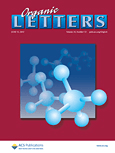
ORGANIC LETTERS
Connecting Ideas and Innovations in Organic ScienceOrganic Letters is a leading peer-reviewed journal dedicated to the rapid dissemination of research in the field of organic chemistry. Published by the American Chemical Society, this esteemed journal has been an invaluable resource for researchers and professionals since its inception in 1999, featuring research articles that contribute significantly to the understanding of organic synthesis and related disciplines. With its impressive impact factor, it is currently ranked in the top quartile (Q1) across multiple categories, including Biochemistry, Organic Chemistry, and Physical and Theoretical Chemistry, showcasing its influence in the scientific community. The journal's commitment to quality is underscored by its high rankings in Scopus, placing it among the top tier of journals in its categories. While not an open-access journal, Organic Letters offers exceptional access options for institutions and individuals seeking cutting-edge research. As it continues to evolve towards its convergence year of 2024, it remains the go-to publication for innovative findings and methodologies in organic chemistry.
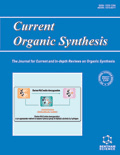
CURRENT ORGANIC SYNTHESIS
Exploring New Horizons in Organic SynthesisCURRENT ORGANIC SYNTHESIS, published by Bentham Science Publishers Ltd, is a leading journal in the field of organic chemistry and biochemistry that serves as a vital platform for researchers and professionals advancing the synthesis of organic compounds. With an ISSN of 1570-1794 and an E-ISSN of 1875-6271, it boasts a significant impact within its category, ranked in the Q3 quartile for both biochemistry and organic chemistry as of 2023. The journal covers innovative research and reviews that enhance our understanding of organic synthesis methodologies, showcasing contributions that advance the field. Operating from Sharjah, United Arab Emirates, CURRENT ORGANIC SYNTHESIS has evolved since its inception in 2005, providing access to a wealth of information essential for students, professionals, and researchers alike. While it currently does not offer open access, the journal continues to maintain a strong community of scholars dedicated to fostering dialogue and innovation in the organic sciences.
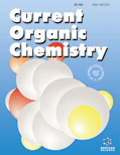
CURRENT ORGANIC CHEMISTRY
Illuminating Pathways in Organic Chemistry InnovationCURRENT ORGANIC CHEMISTRY, published by Bentham Science Publishers, stands as a pivotal platform in the field of organic chemistry, providing innovative insights and advancements since its inception in 1997. With an ISSN of 1385-2728 and an E-ISSN of 1875-5348, this esteemed journal has carved a niche in the academic landscape, currently ranking in the Q3 category for Organic Chemistry according to the 2023 metrics. Operating from the United Arab Emirates, it engages a diverse audience of researchers, professionals, and students by delivering quality peer-reviewed articles that cover a broad spectrum of organic chemistry research. Although the journal does not offer open access, it remains a respected source of knowledge, indexed in Scopus with a percentile ranking of 43, encouraging rigorous discourse and the dissemination of cutting-edge findings. With continuous publication through 2024, CURRENT ORGANIC CHEMISTRY is dedicated to advancing the frontiers of organic chemistry research and technology.

SYNTHESIS-STUTTGART
Shaping Tomorrow's Chemistry Through Rigorous Scholarship.SYNTHESIS-STUTTGART
Published by the esteemed Georg Thieme Verlag KG, SYNTHESIS-STUTTGART stands as a vital resource in the field of Chemistry, specifically focusing on Organic Chemistry and Catalysis. With an impressive publication history dating back to 1970 and continuing through 2024, it serves as a platform for innovative research and developments in synthetic methodologies and their applications. The journal holds a significant impact factor, reflecting its influence within the academic community, and is recognized in the Scopus rankings as a reputable source in its categories, with a rank of #99/211 in Organic Chemistry and #43/68 in Catalysis. Researchers, professionals, and students alike can benefit greatly from its content, which upholds rigorous peer-review standards and contributes to the global discourse in these critical scientific domains.

Heterocyclic Letters
Pioneering Discoveries in Medicinal and Agricultural ChemistryHeterocyclic Letters is an esteemed journal in the field of synthetic organic chemistry, published by RAMAN PUBL. With ISSN 2231-3087 and E-ISSN 2230-9632, this journal aims to disseminate original research and innovative findings related to heterocyclic compounds, which play a crucial role in medicinal chemistry, material science, and agricultural chemistry. Heterocyclic Letters provides a platform for researchers, professionals, and students to share their insights and advancements, thus fostering academic collaboration and knowledge transfer. The journal is dedicated to maintaining high-quality standards in research publication, making it an essential resource for anyone focused on the latest developments in heterocyclic chemistry. Although it does not currently offer Open Access options, the journal’s rigorous peer-review process ensures that only the most credible and impactful studies are published, contributing significantly to the advancement of the field.
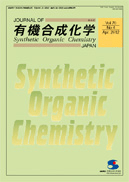
JOURNAL OF SYNTHETIC ORGANIC CHEMISTRY JAPAN
Exploring innovative methodologies for a sustainable future.JOURNAL OF SYNTHETIC ORGANIC CHEMISTRY JAPAN, published by the SOCIETY OF SYNTHETIC ORGANIC CHEMISTRY, JAPAN, is an esteemed publication specializing in the dynamic field of organic chemistry. With a rich history dating back to 1944, this journal aims to disseminate pivotal research findings and innovative methodologies in synthetic organic chemistry, fostering collaboration and knowledge exchange among researchers and professionals. Although it currently holds a modest ranking in the Q4 quartile for organic chemistry, its commitment to advancing the discipline remains steadfast. The journal primarily caters to scholars and students seeking to delve deeper into organic synthesis, highlighting original articles, reviews, and methodological studies. While access to the journal is not open, its contributions to the field are essential for anyone invested in understanding the complexities of organic chemistry. We invite you to explore the journal's offerings and enhance your expertise in synthetic organic processes.
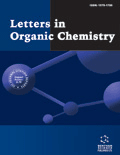
LETTERS IN ORGANIC CHEMISTRY
Pioneering Discoveries in Organic ChemistryLETTERS IN ORGANIC CHEMISTRY is a distinguished journal published by Bentham Science Publishers Ltd, focusing on the rapidly evolving field of organic chemistry. Established in 2005, the journal commits itself to disseminating vital research findings, reviews, and innovative methodologies that contribute to the understanding and advancement of organic chemistry and biochemistry. With an ISSN of 1570-1786 and an E-ISSN of 1875-6255, this journal enhances accessibility and visibility for authors and readers alike, albeit not adopting an open-access model. Positioned within Q4 quartile rankings for both Biochemistry and Organic Chemistry, it serves a niche audience keen on exploring emerging trends and breakthroughs in these disciplines. Its Scopus rankings further reflect its role in the global academic landscape, albeit at the beginning stages of its impact journey. Based in the United Arab Emirates, LETTERS IN ORGANIC CHEMISTRY is dedicated to fostering dialogue among researchers and practitioners, paving the way for future innovations in organic and biochemical sciences.
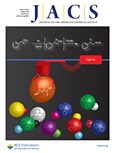
Journal of the American Chemical Society
Connecting Scientists with Cutting-Edge Chemical InsightsJournal of the American Chemical Society (JACS), published by the American Chemical Society, stands as a pivotal publication in the field of chemistry, facilitating the dissemination of significant research findings since its inception in 1879. With an impressive impact factor and esteemed rankings placing it in the Q1 quartile across various categories—including Biochemistry, Catalysis, and Colloid and Surface Chemistry—JACS continues to serve as a vital resource for scientists, professionals, and students alike. Researchers choose JACS for its rigorous peer-review process, ensuring high-quality content that shapes the landscape of modern chemistry. The journal's extensive scope encompasses pivotal advancements and innovative methodologies, reflecting the evolving dynamics of chemical research. With access options being traditional subscription-based, it remains crucial for institutions and individuals to engage with its latest issues to stay at the forefront of chemical science advancement.